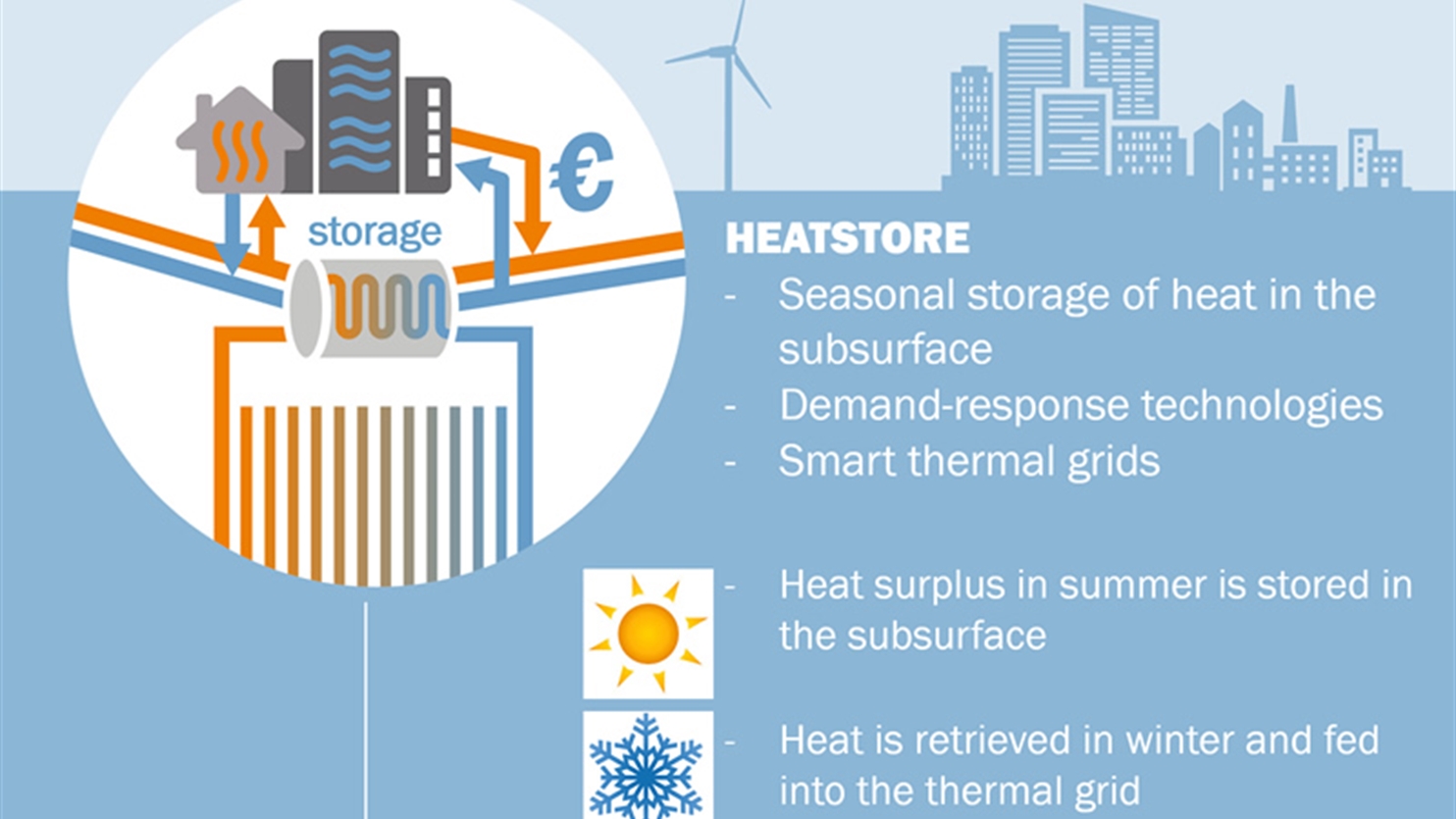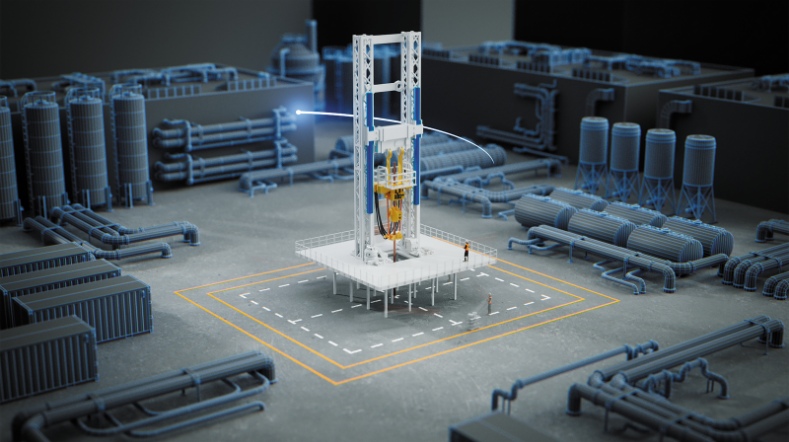
Large-scale storage of sustainable heat
Status project
2018 – present
In cooperation with
23 parties from nine countries
Heatstore is a major European research project to demonstrate technologies for the underground storage of heat. This is because the scale of storage can be increased, and costs can be reduced. This makes heat storage an important part of the energy transition.
The Heatstore project
Heatstore develops technologies for thermal energy storage and demonstrates them in pilots. 23 parties from nine countries are working together and we are coordinating the project. The technologies involve different configurations that combine heat sources, storage technologies, and utilisation of heat.
Six practical trials are planned in the Netherlands, Belgium, Germany, France, and Switzerland. In the Netherlands, the other participants are consultancy firm IF Technology, energy company ECW, water research institute KWR, and the Netherlands Institute of Ecology (NIOO-KNAW).
Underground storage
Underground storage in itself already exists, but on a small scale and at relatively low temperatures. The aim is to demonstrate high temperature storage (HT-UTES), from 25 to 90 degrees, in combination with a variety of heat sources, such as geothermal, solar heat, and residual heat from waste processing. The heat from these sources is stored in aquifers, via underground heat exchangers, and in empty coal mines.
Combination of sources and storage
With a clever combination of heat sources and storage technologies, stored heat should be able to bridge an entire season. The demand for heat can then be better geared to supply. For example, demand from businesses, households, and buildings. The surplus in summer is stored up to several hundred metres deep. In winter, it can then supply heat to heat grids. With smart control technology, the collaborative venture aims to better manage the demand for heat and make the heat grids smarter. In this way, costs can be further reduced.
Encouraging business
Geothermal energy, including underground heat storage, has much more potential than is realised in practice. But there are technological challenges before heat sources and heat storage can be combined on a large scale. The Heatstore project not only advances the technology, but also looks at social embedding, business models, and legislation. For example, the consortium wants to ensure the shortest possible time between technological development and market introduction.
Seasonal heat storage
Demand for heat in the Netherlands is very much dependent on the season. There is high demand in winter and lower demand in summer. The challenge is to match the demand for heat and the supply of sustainable heat sources without making the costs too high. Seasonal storage of heat underground can play a major role in this.
Small scale and above ground
Small-scale heat storage is already common, for example, in boilers or heat-distribution grids. These are mainly above-ground heat storage buffers that store heat for a few hours. Seasonal heat storage in heat-distribution grids as a technology is not yet widely applied. A breakthrough innovation in this is the heat battery for energy storage.

Locations and opportunities
In several European and Dutch projects, we are working on heat storage systems that can not only bridge seasons but can also be used on a large scale, i.e., up to thousands of households or hectares of horticulture that receive their heat from storage in the winter months. Underground heat storage does not require particularly complex technology in order to be possible on a large scale. What is particularly important, and what we are currently working on, is determining where the subsoil is suitable for heat storage, and where it can best be combined with the above-ground infrastructure.
Get inspired
Novel drilling technology to accelerate the heat transition












